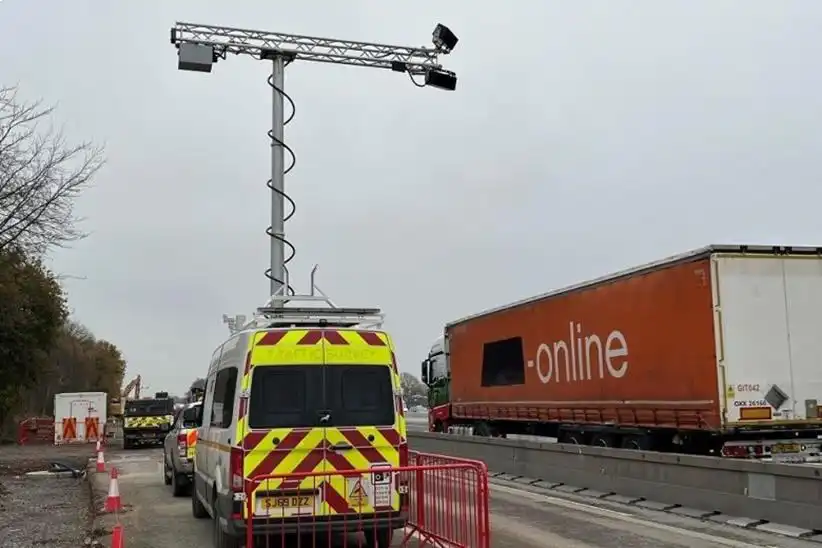New speed cameras drive 90% surge in convictions for drivers using mobile phones

The deployment of advanced speed camera technology has significantly increased the number of drivers caught using mobile phones illegally while driving.
In 2023, the number of motorists in England and Wales convicted for using handheld devices surged by 90% compared to 2022, according to AA analysis. This spike is attributed to the implementation of cutting-edge speed cameras that enhance enforcement of this offense.
Official figures indicate that convictions for using a phone while driving reached a seven-year high in 2023. Ministry of Justice data revealed that 13,332 drivers were found guilty last year, up from 6,990 in 2022, marking a 90% year-on-year increase.
In March 2022, laws regarding mobile phone use by drivers were tightened, banning any handling of devices while driving and increasing penalties. Offenders now face a £200 fine and six penalty points on their license.
The government also broadened the definition of ‘using’ a device to include handling a phone in any manner, such as scrolling through music playlists, browsing the internet, taking photographs, or playing games—even when stopped at red lights or in traffic. Exceptions are made for emergency calls, contactless payments at drive-throughs, and hands-free calls.
Despite the stricter regulations, many drivers continue to violate the law. However, the number of offenders being caught has risen, largely due to new roadside cameras and enhanced enforcement tactics by police and local authorities. These tactics include covert HGVs monitoring motorways and targeted enforcement periods.
Jack Cousens, head of roads policy for The AA, stated, "Despite a high-profile change in the law, many drivers are still being caught using mobile phones behind the wheel. Improved cameras are beneficial as they enforce road rules more effectively. However, technology alone cannot stop offenders in the act. More police presence on the roads is necessary to catch people in the act and enhance road safety."
Types of Speed Cameras Detecting Phone Use and Other Offenses
Currently, there are at least 18 different types of speed cameras in use across Britain. Three notable types not only detect speeding but also other offenses such as phone use, not wearing seatbelts, running red lights, and tailgating.
Jenoptik VECTOR-SR Speed Camera
This 'ultra' speed camera, approved for use in Britain since 2019, is elevated on long poles to deter vandalism.
It uses a video-based system with an intelligent virtual grid to detect speeding, eliminating the need for road sensors and markings.
Infra-red technology allows it to capture images without a flash, even at night or in bad weather.
It covers up to three lanes of traffic in both directions and uses Automatic Number Plate Recognition (ANPR) to identify vehicle owners.
It also records footage of other offenses, such as not wearing seatbelts or using mobile phones.
Aecom Mobile AI Speed Camera
This mobile camera, developed by National Highways, is designed to catch multiple offenses.
It features a large structure that extends from the roof to create an overhead gantry with advanced surveillance tech.
The camera can be transported on a custom trailer for flexibility and is currently used by several police forces.
It uses multiple high-definition cameras with AI to detect phone use and seatbelt violations.
Long Ranger Mobile Speed Camera
In use since 2018, this camera can capture speeding drivers from over half a mile away.
It also detects tailgating, middle-lane hogging, and phone use, making it difficult for drivers to avoid detection.
Additional Findings
AA analysis of Ministry of Justice data also revealed:
Driving without vehicle tax convictions reached an all-time high of 99,694, a 94% increase.
Convictions for running red lights and ignoring signs hit a 12-year high with 11,940 guilty verdicts.
Speeding convictions decreased by 8%, with over 203,500 guilty verdicts.
Motoring offenses accounted for three out of every five court cases, with a 92% conviction rate for drivers.
By Jodie Chay Oneill | July 2, 2024